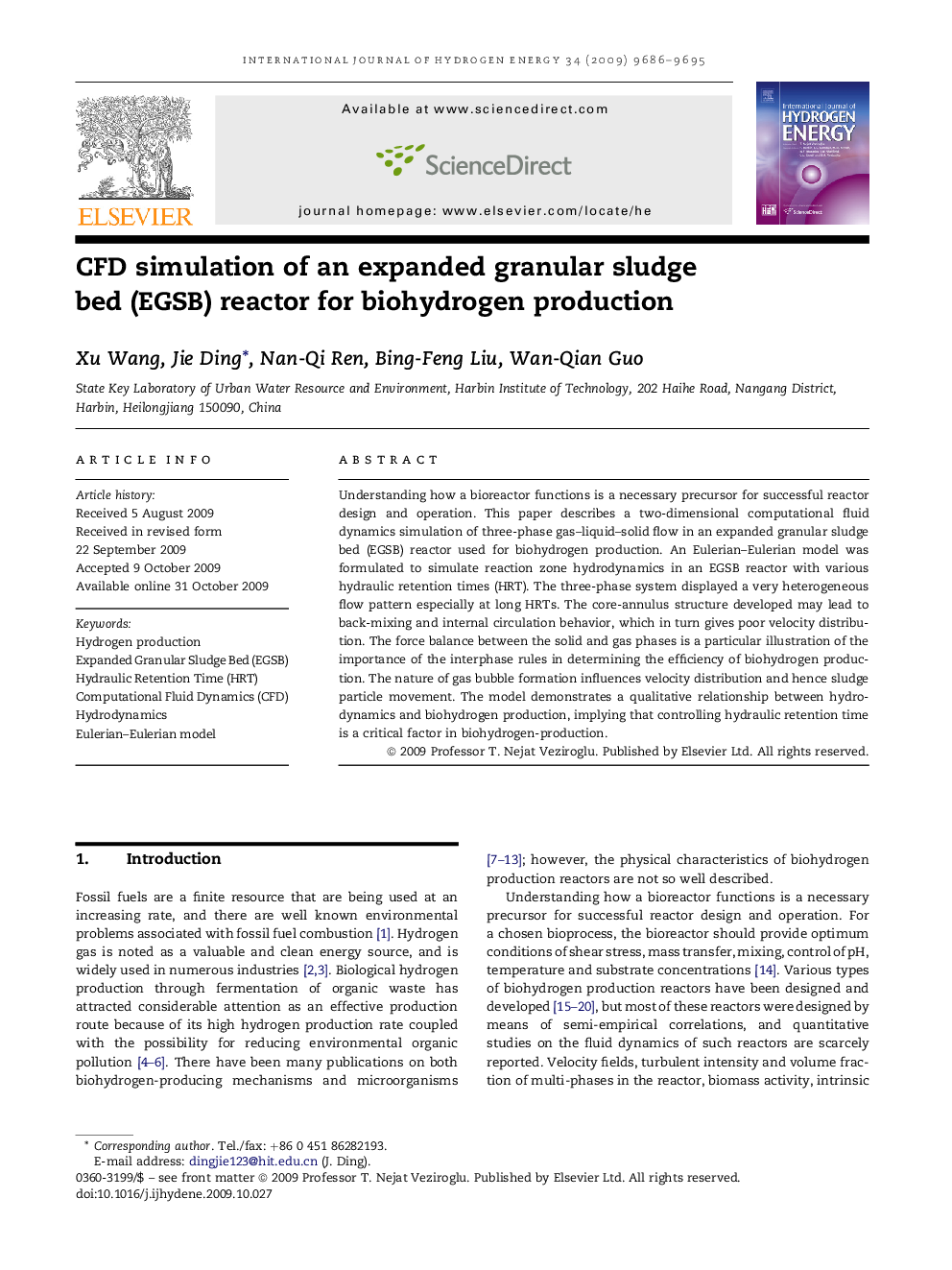| Article ID | Journal | Published Year | Pages | File Type |
|---|---|---|---|---|
| 1278195 | International Journal of Hydrogen Energy | 2009 | 10 Pages |
Understanding how a bioreactor functions is a necessary precursor for successful reactor design and operation. This paper describes a two-dimensional computational fluid dynamics simulation of three-phase gas–liquid–solid flow in an expanded granular sludge bed (EGSB) reactor used for biohydrogen production. An Eulerian–Eulerian model was formulated to simulate reaction zone hydrodynamics in an EGSB reactor with various hydraulic retention times (HRT). The three-phase system displayed a very heterogeneous flow pattern especially at long HRTs. The core-annulus structure developed may lead to back-mixing and internal circulation behavior, which in turn gives poor velocity distribution. The force balance between the solid and gas phases is a particular illustration of the importance of the interphase rules in determining the efficiency of biohydrogen production. The nature of gas bubble formation influences velocity distribution and hence sludge particle movement. The model demonstrates a qualitative relationship between hydrodynamics and biohydrogen production, implying that controlling hydraulic retention time is a critical factor in biohydrogen-production.
